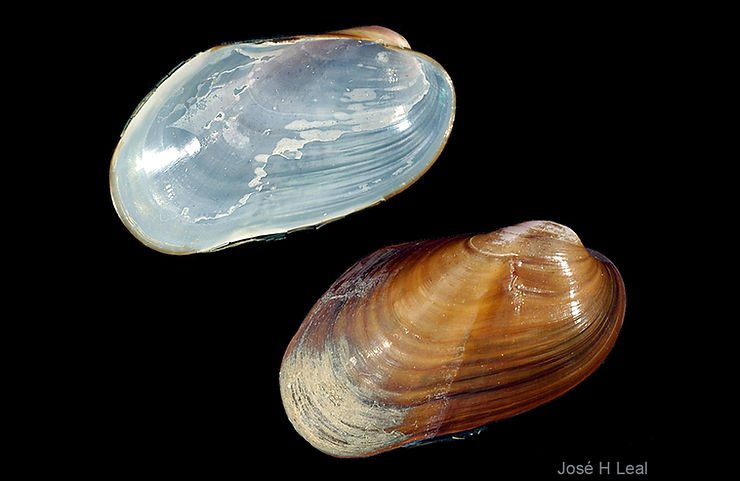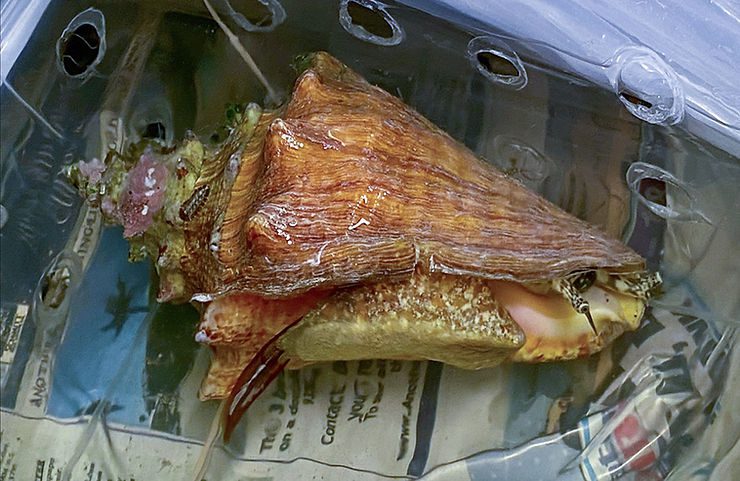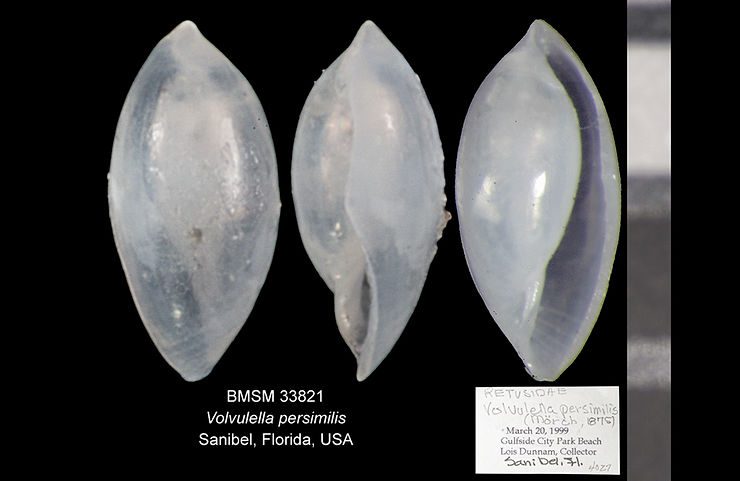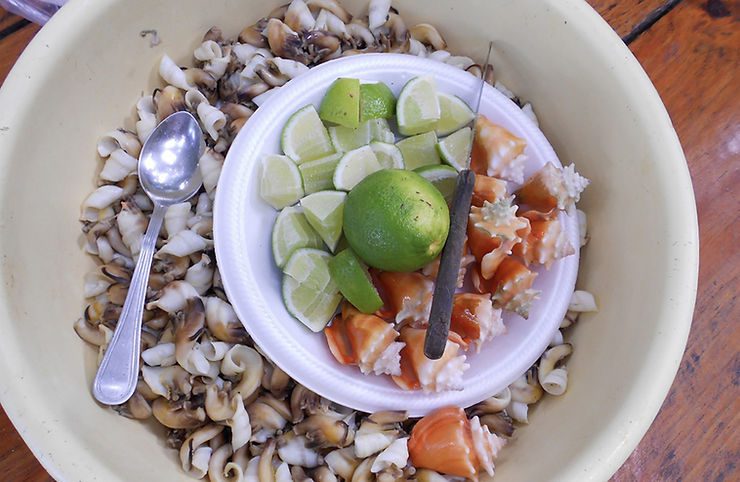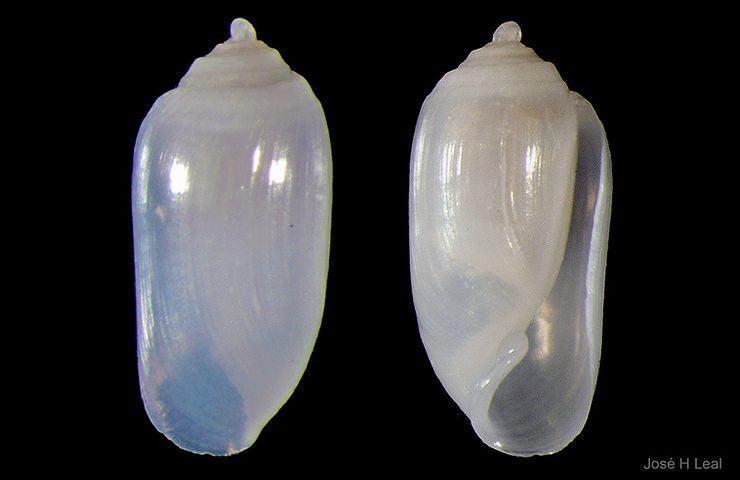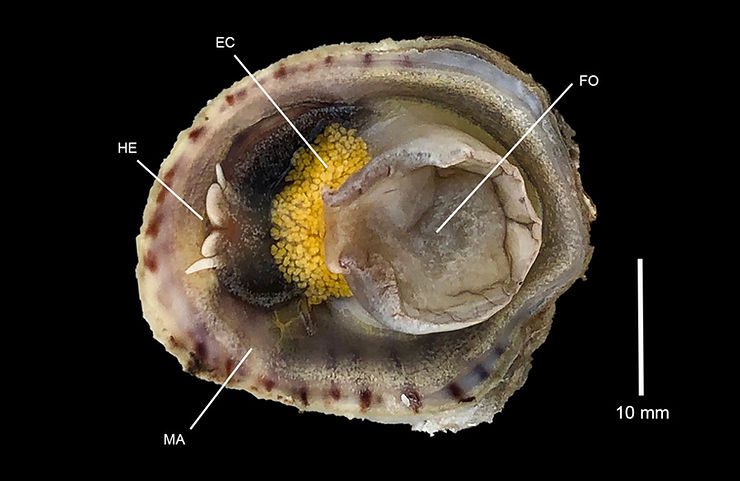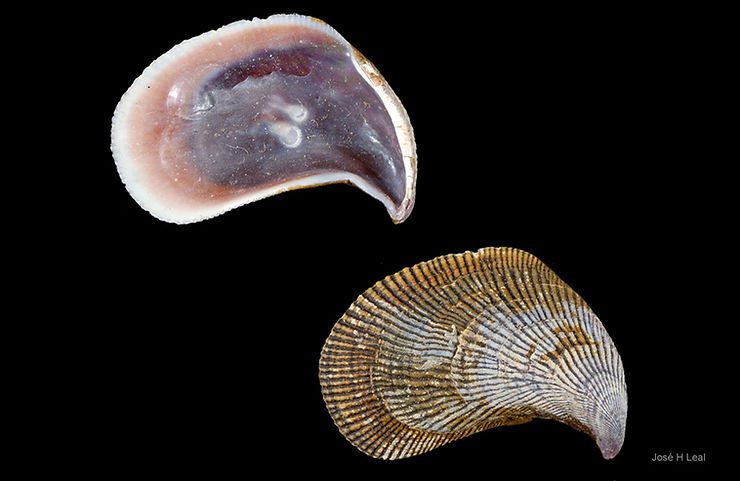
Shell of the Week: The Hooked Mussel
Ischadium recurvum (Rafinesque, 1820) is a local but uncommon mussel that inhabits protected bay areas and the calm waters of local estuaries. Reaching 50 mm (about two inches), its shell is moderately inflated, curved, resembling a claw, or a hook. The surface sculpture consists of radial lines extending from the beak outward. The outside color is dark-grayish to dark-brown, with interspaces between radial lines of darker color. The inside surface is iridescent, nacreous, with purplish, bluish,

